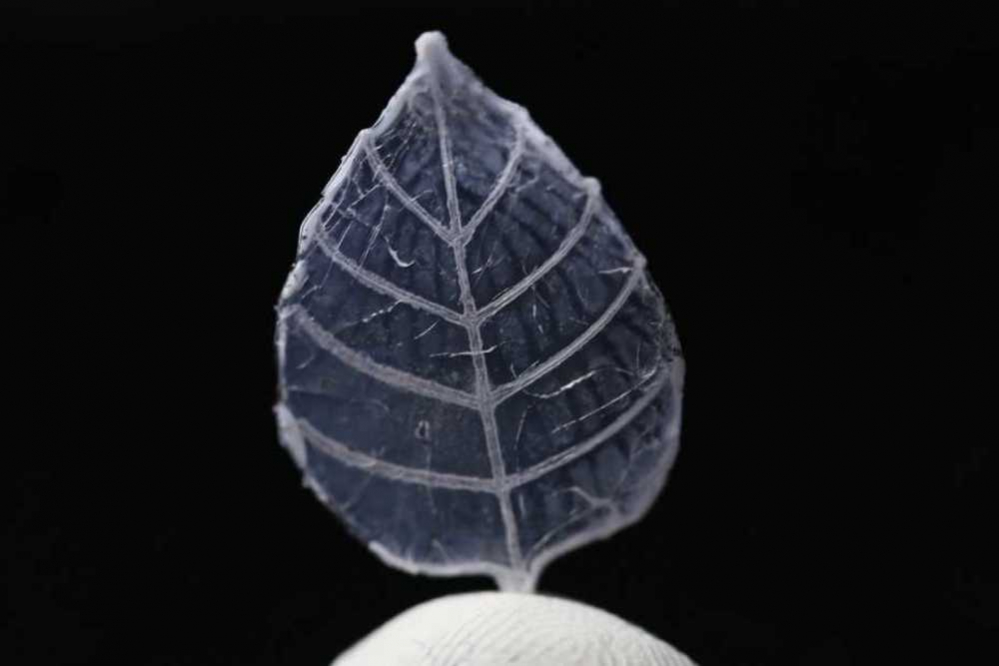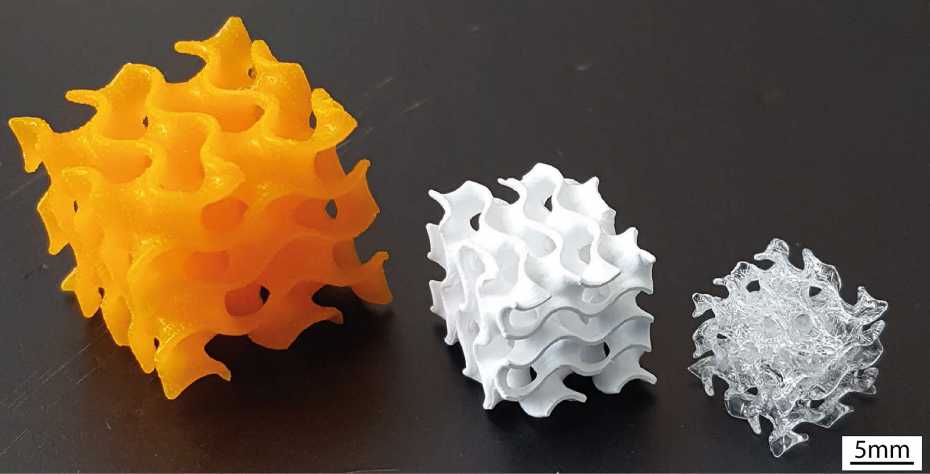Scientists from the Complex Materials Group at ETH Zürich, Switzerland, have 3D printed glass objects using a specialized resin and Digital Light Processing (DLP).
As stated in the study published in a recent issue of Natural Materials, this method leverages the photopolymerization-induced phase separation of hybrid resins containing plastic and organic molecules. This creates complex glass parts with high spatial resolutions and multi-oxide chemical compositions.
“The few enticing examples of 3D printed glasses are limited in their chemical compositions and suffer from the low resolution achievable with particle-based or molten glass technologies,” the study states.
“The digital fabrication of oxide glasses by 3D printing represents a major paradigm shift in the way glasses are designed and manufactured, opening opportunities to explore functionalities inaccessible by current technologies.”
Glass 3D printing
Compared to traditional methods of glass production such as blowing, spinning and manual rolling, additive manufacturing has the potential to accelerate the creation of high-resolution objects. According to the Group, automating previous methods of glass-making could set new standards of productivity and quality in industries using such materials.
Although 3D printing techniques using molten glass and powdered ceramic particles have been explored, the researchers have recognized several disadvantages. With molten glass, extremely high temperatures band heat-resistant equipment is required, while parts made from ceramic powder are shown to lack complexity.
Thus, the implementation of customized resin was feasible as it can be used with available DLP 3D printers. Furthermore, the researchers were able to change various parameters in each layer of the DLP process, including pore size. Upon experimentation, it was observed that weak light intensity results in large pores and intense illumination produces small pores.
Dr. Kunal Masania, Senior Scientist at ETH Zürich, added, “We discovered that by accident, but we can use this to directly influence the pore size of the printed object.”

Modifying glass making processes
Modifications to the microstructure of a glass part are also integral in the researcher’s method. This is done layer by layer by mixing chemical compounds such as silica with borate or phosphate into the resin. In this process, acrylate monomers and pre-ceramic precursors such are photopolymerized. A blank made from the DLP stage is then processed using a firing method at two different temperatures: at 600˚C to burn off the polymer framework and 1000˚C to densify the ceramic structure into glass.
This is said to shrink objects significantly (to a size comparable to die) as they become transparent and hard like window glass. According to Dr. Masania, large glass objects, such as bottles, drinking glasses or windowpanes, were not the focus of this experimentation. Rather, the Group wanted to prove the feasibility of producing glass objects of complex geometry.
Presently, the researchers have applied for a patent and are negotiating with an undisclosed Swiss glassware dealer interested in the technology. The study concludes, “The ability to program the morphology of oxides using light-induced phase separation was further exploited to DLP print hierarchical ceramics with complex macroscopic geometry and voxel-specific pore sizes at the nanoscale.”
“With the high-resolution complex geometries and locally tunable structure of the multicomponent glasses demonstrated in this work, the proposed 3D printing platform is a step towards combining the high level of automation offered by modern digital fabrication processes with the accurate control over shape and chemistry traditionally achieved by manual labor.”

“Three-dimensional printing of multicomponent glasses using phase-separating resins” is co-authored by David G. Moore, Lorenzo Barbera, Kunal Masania , and André R. Studart.
Subscribe to the 3D Printing Industry newsletter, follow us on Twitter and like us on Facebook for the latest additive manufacturing news.
Looking for a fresh start in the 3D printing industry? Visit 3D Printing Jobs to commence your career in additive manufacturing.
Featured image shows the 3D printed brake suspension link component. Photo via Mobility goes Additive.


